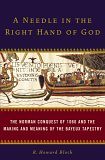So, after I posted yesterday, I saw that I had missed 2 very important updates!
1. The new issue of The Edge of the Forest is up! Check it out! Lots of awesome articles, plus 2 reviews by yours truly (My Last Best Friend by Julie Bowe and Reality Leak by Jodi Sensel-- both are great reads!)
2. The new Carnival of Children's Lit is up over at Wizard's Wireless. My contribution is actually my Geek Buffet post about the Xela Awards... check it out!
And now, a review of 2 books off the big scary list! (And a break because they're both Adult Nonfiction)
First up is Ten Thousand Miles Without a Cloud Sun Shuyun
This book isn't available in the US, so I had to order it from England after reading her The Long March: The True History of Communist China's Founding Myth.
In Ten Thousand Miles Without a Cloud, Sun sets out to retrace the journey of Xuanzang, a Buddhist monk who traveled to India at the start of the Tang Dynasty to learn Sanskrit and bring back new sutras to Chinese Buddhists. (His travels being the basis of Chinese classic, Journey to the West.)
Not a Buddhist herself, Sun is searching for her grandmother's faith, and Xuanzang's. What was his driving force as he faced many perils along his way?
Sun has a magical way of trying history and legend together with her current narrative. It all blends seamlessly and also paints an amazing portrait of the changing face of Modern China.
I highly recommend it, even if you do have to get it from England. Well worth it.
ALSO! How much do I love the fact that she has an Orphan Works notice on her list of illustrations! WONDERFUL!!!!! (sorry, that's the geek in me)
A Needle in the Right Hand of God: The Norman Conquest of 1066 and the Making and Meaning of the Bayeux Tapestry R. Howard Bloch
While this was interesting, as pop history it was ultimately unsatisfying. Bloch spends a lot of time proving minor points (did I really need half a chapter on the longship find of Sutton Hoo?) and leaves some other points hanging.
His premise is that the Bayeux Tapestry was stitched as a way to bring about a new multi-cultural peace and ultimately... I didn't buy it. There are many obvious other explanations to his supporting points that he doesn't address.
For instance, the fact that the tapestry is vague about some of the stickier points of the story (what the contents of the oath Harold swore, who Edward appointed as successor) isn't necessarily "sufficiently undefined as to permis all to identify with their particular point of view" ON PURPOSE. Maybe (a) it was common knowledge-- it's not like there are paragraphs of text here, most of the narration is based on common knowledge (b) Maybe they didn't know. This information doesn't appear in any other source, either. Maybe it was a secret.
But Bloch doesn't address these possible explanations for any of his evidence.
I do like his in-depth art-analysis of the symbolism and origins of various aspects of the tapestry, especially as he does refer to specific panels that are illustrated in the full color insert pages, as well as several other full-color and black-and-white illustrations throughout the text.
And as a minor note, I really didn't like the font. The lower case p has this little bit that extends out and is just visually very distracting.



No comments:
Post a Comment